Let’s discuss about the Langtang Trek Difficulty and provide insights for potential trekkers. Langtang Trek is a popular trekking route in Nepal, known for its stunning Himalayan views and cultural experiences.
Overview of the Langtang Trek:
A mesmerizing adventure, the Langtang trek, takes you through the Langtang Valley in the Langtang National Park, located in the central part of Nepal. This trek is often considered one of the best alternatives to the popular Annapurna and Everest Base Camp treks, offering a unique blend of natural beauty, cultural exploration, and a relatively quieter trail.
The trek typically begins from the village of Syabrubesi, which can be reached after a scenic drive from Kathmandu. From Syabrubesi, trekkers embark on an incredible journey that spans approximately 70-90 kilometers, depending on the chosen itinerary and side trips.

The Langtang Trek presents a diverse range of landscapes, taking you through lush forests, picturesque terraced fields, alpine meadows adorned with wildflowers, and ultimately to the majestic snow-capped peaks of the Langtang Himalayas. Some of the prominent peaks visible during the trek include Langtang Lirung (7,227 meters), Gang Chhenpo (6,388 meters), and Dorje Lakpa (6,966 meters), among others.
Culture
Langtang region is also home to a rich cultural heritage, primarily influenced by the Tamang and Tibetan ethnic communities. Along the trail, you will encounter traditional Tamang villages, monasteries, and prayer flags fluttering in the wind, providing glimpses into the local way of life and religious practices. The warm hospitality of the locals adds an extra charm to the trek, making it a culturally immersive experience.
Also Read: Experience the Rich Culture of the Tamang People at the Langtang Trek Festival
While the Langtang Trek is renowned for its natural and cultural beauty, it is important to be prepared for its challenges. The trek involves a significant amount of uphill and downhill hiking, often on narrow and rocky paths. Trekkers need to have a moderate level of fitness to endure the daily distances and the varying altitudes.
Altitude, best time, accommodation
Altitude is a crucial factor to consider during the Langtang Trek. As you ascend to higher elevations, acclimatization becomes essential to prevent altitude sickness. The trail provides ample opportunities for acclimatization, with scheduled rest days and shorter hiking days to aid the process.
The best time to undertake the Langtang Trek is during the spring (March to May) and autumn (September to November) seasons.
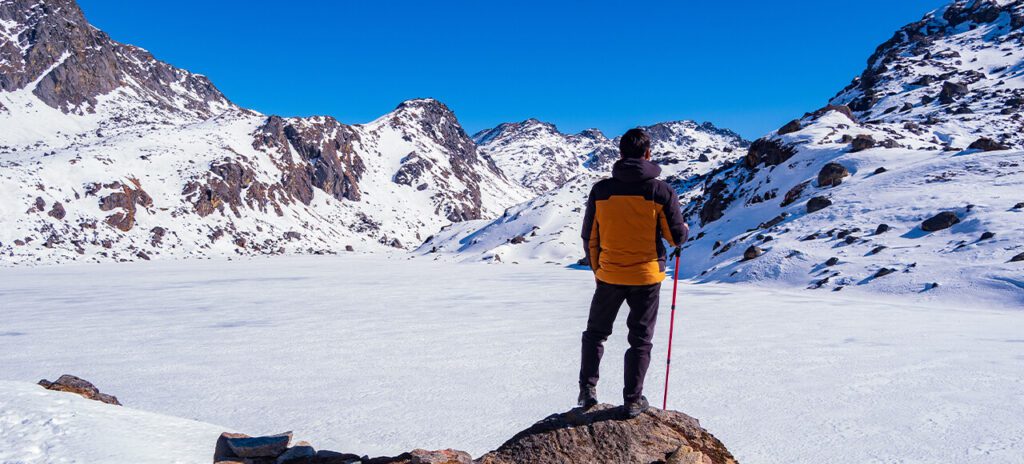
Spring brings vibrant rhododendron blooms, while autumn offers clear skies and excellent visibility of the surrounding peaks. However, it is possible to trek during other seasons as well, with appropriate preparations and considerations for the weather conditions.
It offers a range of accommodation options, including teahouses and lodges that provide basic amenities such as meals and a place to rest. While teahouses are available at regular intervals, it is advisable to have some flexibility in your itinerary, especially during peak seasons, as accommodation availability may vary.
Physical Fitness and Training:
Undertaking the Langtang Trek requires a certain level of physical fitness and endurance. While it doesn’t require extreme athleticism, being adequately prepared will enhance your overall trekking experience. Here are some key aspects to consider:
You may also like: Things you must Know Before the Langtang Valley Trek
Cardiovascular Endurance:
The Langtang Trek involves long days of walking and hiking on varied terrains. Building cardiovascular endurance is crucial to tackling the uphill sections and maintaining a steady pace throughout the trek. Engage in activities such as jogging, swimming, cycling, or brisk walking to improve your cardiovascular fitness.
Strength and Stamina:
It includes steep ascents and descents, as well as challenging sections with rocky paths. Building strength in your lower body, particularly in your leg muscles, will greatly assist in navigating these terrains. Incorporate exercises like squats, lunges, calf raises, and stair climbing into your training routine.

Additionally, focus on improving overall stamina by gradually increasing the duration and intensity of your workouts.
Endurance Training:
Typically it involves trekking for 5-7 hours a day, covering varying distances. To prepare your body for these extended periods of physical activity, gradually increase the duration of your training sessions. Plan long hikes or walks on weekends or days off to simulate the conditions of the trek.
Hill Training:
Included in this trek are significant elevation gains and losses. If possible, incorporate hill training into your routine. Seek out hilly areas or use staircases to mimic uphill and downhill trekking. This will help condition your muscles and build strength for the challenging sections of the trail.
Pack Weight Management:
During the trek, you’ll be carrying a backpack with essential items. It’s important to be comfortable with the weight you’ll be carrying during the Langtang Trek. Gradually increase the weight in your training backpack to mimic the load you’ll be carrying during the trek. This will help condition your back, shoulders, and core muscles.
Flexibility and Stretching:
Maintaining flexibility is crucial for preventing injuries and aiding recovery after long days of trekking. Include stretching exercises in your training routine, focusing on your legs, hips, back, and shoulders. Yoga or Pilates can also be beneficial for improving flexibility and balance.
More: Nepal’s Top Adventure Spots
Remember to consult with a healthcare professional before starting any new fitness regimen, especially if you have any pre-existing medical conditions.
By incorporating these training aspects into your preparations, you’ll be better equipped to handle the physical demands of the Langtang Trek. Training not only improves your physical fitness but also boosts your confidence and allows you to fully enjoy the stunning
Altitude and Acclimatization:
Altitude plays a significant role in the difficulty of the Langtang Trek. As you ascend to higher elevations, the air becomes thinner, resulting in reduced oxygen levels. It is crucial to understand the effects of altitude on your body and take necessary precautions to ensure a safe and enjoyable trek. Here’s what you need to know about altitude and acclimatization:
Altitude Sickness:
sickness from Altitude, also known as acute mountain sickness (AMS), can occur when ascending to high altitudes too quickly without giving your body enough time to adjust. Symptoms of AMS include headache, nausea, dizziness, fatigue, loss of appetite, and difficulty sleeping. It’s important to recognize these symptoms and take appropriate action.
Acclimatization:
Acclimatization is the process of adapting to higher altitudes, allowing your body to gradually adjust to the lower oxygen levels. The Langtang Trek incorporates acclimatization days to facilitate this process. These rest days give your body time to acclimate and reduce the risk of altitude-related illnesses.
Hydration:
Staying hydrated is crucial for acclimatization. Drink plenty of fluids throughout the trek, aiming for at least 3-4 liters of water per day. Hydration helps your body adjust to altitude by maintaining adequate blood volume and promoting proper oxygen circulation.
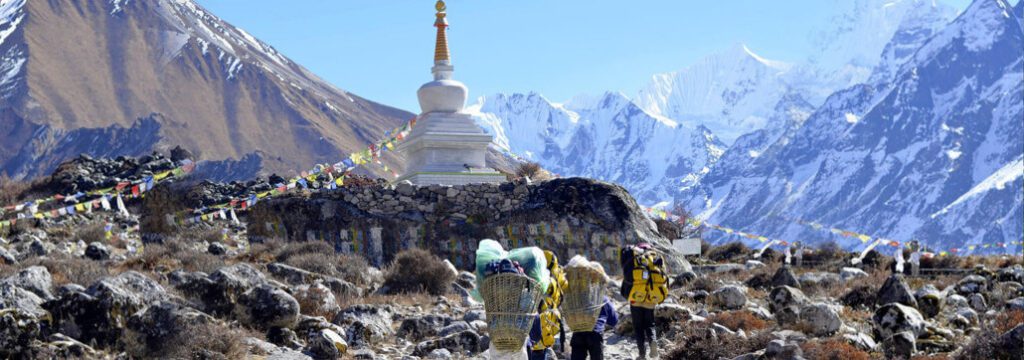
Gradual Ascent:
One of the key strategies for acclimatization is a gradual ascent. The Langtang Trek is designed to allow your body to adjust gradually to increasing altitudes. It is important to follow the prescribed itinerary, which includes rest days at specific elevations. These rest days give your body time to adapt before ascending further.
Climbing High, Sleeping Low:
A technique often recommended for acclimatization is “climbing high, sleeping low.” This involves ascending to a higher altitude during the day to explore scenic viewpoints or side trails and then descending to sleep at a lower elevation. This process helps your body adjust more effectively to higher altitudes.
Listen to Your Body:
Pay attention to how your body is responding to the altitude. If you experience symptoms of AMS, communicate with your trekking companions and guide. It’s important not to ignore or downplay any symptoms. Descending to a lower elevation is often the best course of action to alleviate symptoms and prevent further complications.
Medications:
Some trekkers may consider taking medications like acetazolamide (Diamox) to aid in acclimatization. These medications help stimulate breathing and reduce the symptoms of AMS. Consult with a healthcare professional before taking any medications, as they may have side effects or interactions with other medications you are taking.
Read: 19 You Need To Know Before Visiting Nepal
Safety and Preparedness:
It’s important to be prepared for emergencies related to altitude sickness. Trek with an experienced guide who is knowledgeable about altitude-related illnesses and emergency procedures. Familiarize yourself with the signs and symptoms of AMS and understand when it’s necessary to descend or seek medical help.
By understanding the effects of altitude and prioritizing proper acclimatization, you can minimize the risks associated with high altitudes and enjoy a safer and more rewarding Langtang Trek experience. Remember, everyone, acclimatizes differently, and it’s essential to listen to your body and prioritize your health throughout the journey.
Trekking Duration and Daily Distances:
Typically the Langtang trek spans a duration of 7 to 10 days, depending on the specific itinerary and side trips you choose to include. Each day of the trek involves a significant amount of walking, covering varying distances. Here’s what you can expect in terms of trekking time and daily distances:
Daily Trekking Time:
On average, you can anticipate trekking for about 5 to 7 hours each day. The actual trekking time may vary based on your fitness level, the pace of the group, and the specific terrain encountered. It’s important to maintain a steady and comfortable pace that allows you to enjoy the surroundings and minimize fatigue.
Trekking Distances:
The Langtang Trek covers a distance of approximately 70 to 90 kilometers, depending on the specific route and any additional side trips you opt for. The distances covered each day may range from 8 to 15 kilometers, depending on the terrain and altitude gains. It’s essential to be prepared for the varying distances and adjust your pace accordingly.
Challenging Terrains:
involved in the Langtang trek diverse terrains, ranging from gentle slopes to steep ascents and descents. Some sections of the trail can be rocky and uneven, requiring careful footing and balance. Be prepared for these challenging terrains and factor in extra time to navigate through them.
Altitude and Trekking Pace:
As you ascend to higher altitudes, the thinning air may affect your pace. It’s important to listen to your body and maintain a moderate and sustainable pace to prevent altitude-related issues.
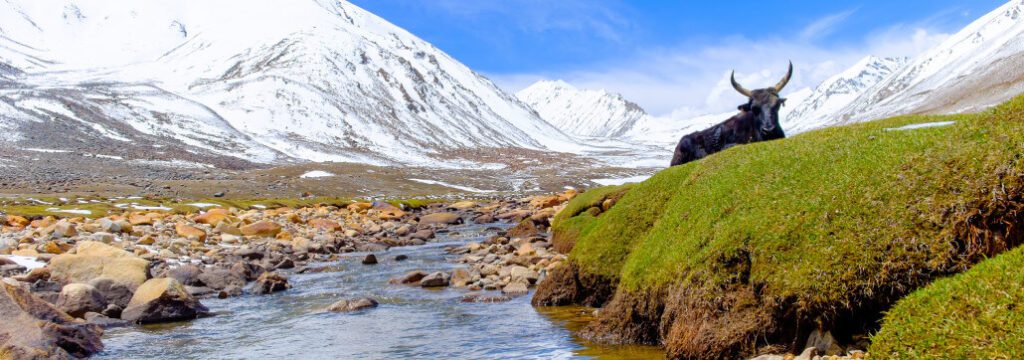
Trekking times mentioned earlier take into account gradual altitude gains and acclimatization days, ensuring a safer and more enjoyable experience.
Rest Days and Side Trips:
Included in the Langtang trek rest days at specific elevations to aid in acclimatization. On these rest days, you have the option to explore nearby areas, take short hikes, or rest and rejuvenate. Side trips to scenic viewpoints, such as Tserko Ri or Kyanjin Ri, can also be included in the itinerary, adding to the overall trekking distance and time.
Flexibility in Itinerary:
It’s important to maintain some flexibility in your itinerary, especially during peak seasons or in the event of unexpected circumstances such as weather changes or personal preferences. Having a flexible itinerary allows you to adjust your daily distances and trekking times based on your comfort level, ensuring a more enjoyable and less rushed experience.
Popular: Syabrubesi: Junction of major Trekking Route
Remember that the mentioned trekking times and distances are approximate and can vary depending on individual factors. It’s essential to trek at a pace that suits your fitness level and allows you to appreciate the stunning landscapes and cultural experiences along the Langtang Trek. Stay hydrated, take breaks when needed, and embrace the journey at your own pace.
Weather and Seasonal Considerations:
Weather and seasons play a crucial role in determining the overall experience of the Langtang Trek. Being aware of the climate patterns and understanding the seasonal considerations will help you plan your trek accordingly. Here’s what you need to know about the weather and the best time to undertake the Langtang Trek:
Best Time to Trek:
Langtang Trek is most popular during the spring (March to May) and autumn (September to November) seasons. These seasons offer favorable weather conditions, clear skies, and pleasant temperatures, making them ideal for trekking. During spring there are blooming rhododendrons and other colorful wildflowers, while autumn showcases stunning views of the surrounding peaks.
Spring Season (March to May):
Spring is a beautiful time to trek in the Langtang region. The weather gradually warms up, and the snow starts to melt, creating lush green landscapes. However, be prepared for occasional rain showers during this season. The temperatures range from mild to moderately warm, with daytime temperatures ranging from 10°C to 20°C (50°F to 68°F) at lower elevations.
Autumn Season (September to November):
Autumn is another excellent time to undertake the Langtang Trek. The weather is generally stable, with clear skies and mild temperatures.
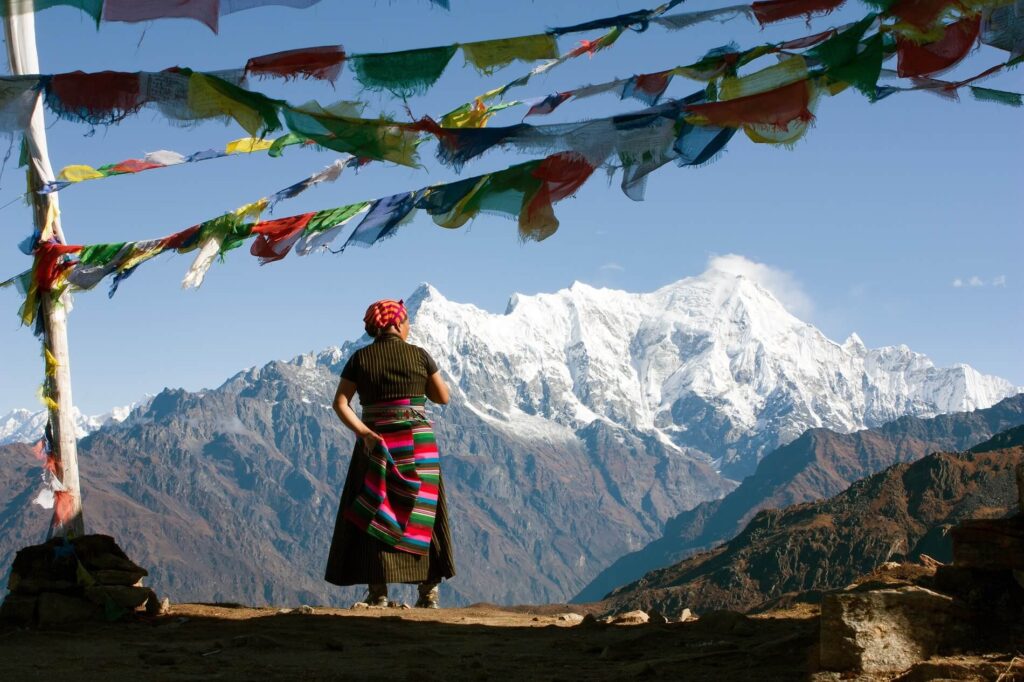
The daytime temperatures range from 10°C to 15°C (50°F to 59°F) at lower elevations, offering comfortable trekking conditions. However, popular sections of the trail can get crowded during this season, so it’s advisable to make advance bookings for accommodations.
Monsoon Season (June to August):
Monsoon season in Nepal brings heavy rainfall, particularly during July and August. The Langtang Trek is not recommended during this time due to the increased risk of landslides, trail disruptions, and limited visibility. However, if you’re prepared for wet and muddy conditions, it’s possible to trek in the early part of June when the rainfall is relatively less.
Winter Season (December to February):
Winter brings colder temperatures and the possibility of snowfall in the Langtang region. The temperatures at higher elevations can drop below freezing, especially during the nighttime. Trekking in winter requires additional preparations, including warm clothing, proper gear, and an experienced guide. The trail may be less crowded during this season, offering a quieter and more serene experience.
Trending: 10 Things I Wish I Knew Before Trekking the Pikey Peak Trek
Weather Variability:
It’s important to note that weather conditions in the mountains can be unpredictable, regardless of the season. Be prepared for sudden changes in weather, especially at higher elevations. Carry appropriate gear, including waterproof and windproof clothing, and be aware of any weather advisories or warnings issued by local authorities.
Sunrise and Sunset Times:
Consider the sunrise and sunset times when planning your trekking days. The daylight hours may vary depending on the season, affecting the amount of time available for trekking each day. Plan your daily distances and rest breaks accordingly to ensure you reach your destination before dark.
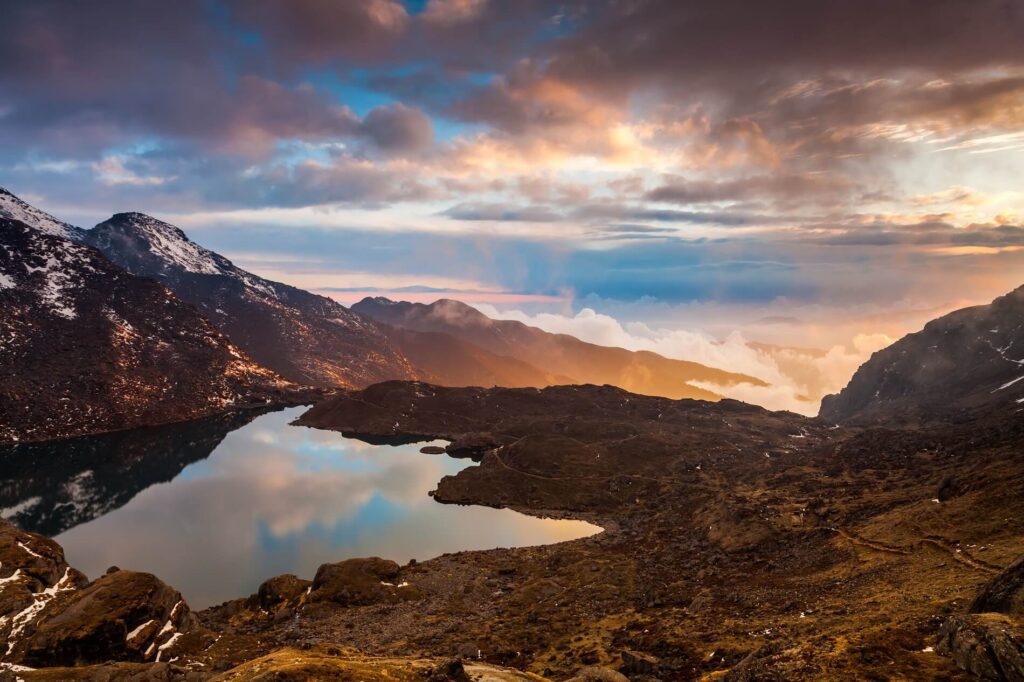
It’s recommended to check the weather forecast and consult with experienced local guides or trekking agencies before embarking on the Langtang Trek. They can provide you with the most up-to-date information and help you plan your trek based on the prevailing weather conditions.
By choosing the right season and being prepared for weather fluctuations, you can enhance your trekking experience in the Langtang region. Enjoy the breathtaking views, stunning landscapes, and favorable weather conditions as you embark on this memorable adventure.
Equipment and Packing Tips:
To tackle the challenges of the Langtang Trek, it is essential to have the right equipment and pack wisely. Some key items to include are sturdy trekking boots, warm clothing, a waterproof backpack, a sleeping bag, a hat, sunglasses, sunscreen, and a first aid kit. Pack according to the expected weather conditions and consider the terrain’s demands.
Guided Trek vs. Independent Trekking:
There are two options for undertaking the Langtang Trek: going on a guided trek or trekking independently. A guided trek offers the advantages of professional guides, porters to carry your load, and logistical support. On the other hand, independent trekkers should be self-reliant, possess sufficient knowledge of the trail, and ensure they are adequately prepared. Going on a guided trek offers you more possibilities for safety and information.
Let our expert team at Asian Heritage Treks and Travel take care of everything — from guided tours to personalized packing tips and travel arrangements.
Plan an exciting trip







